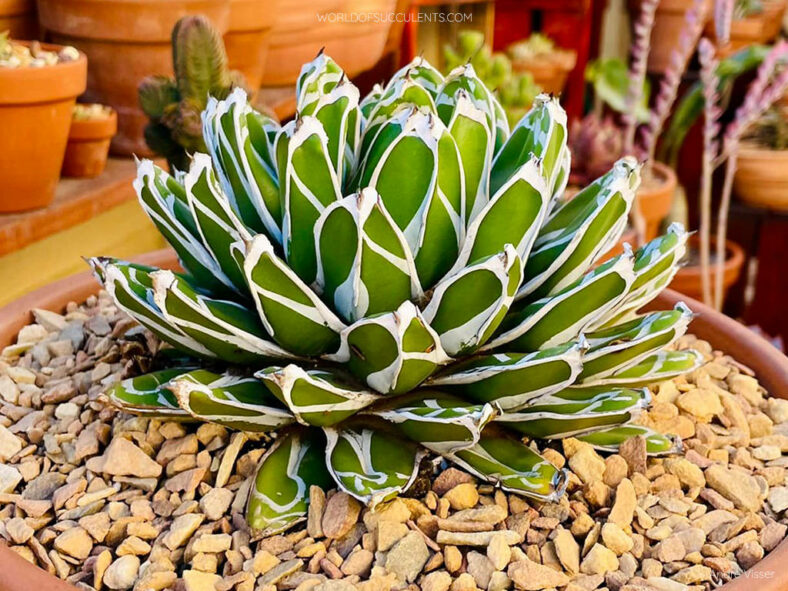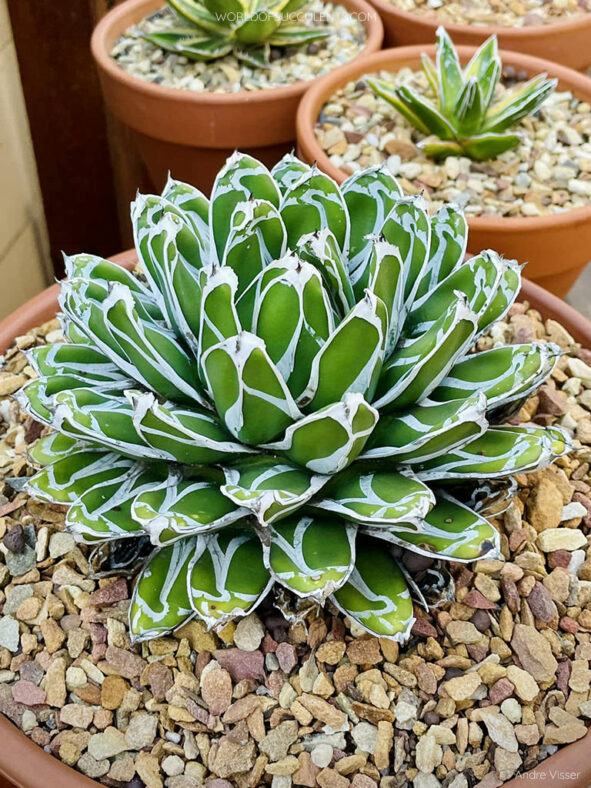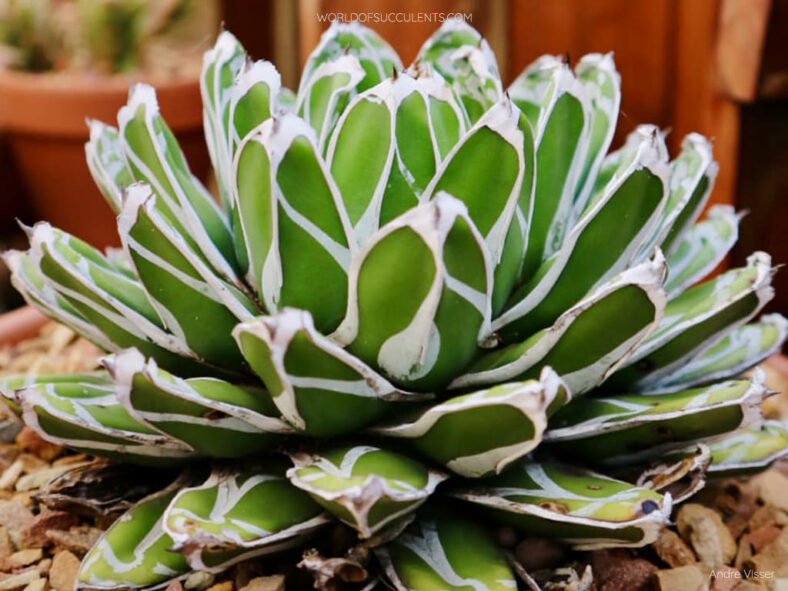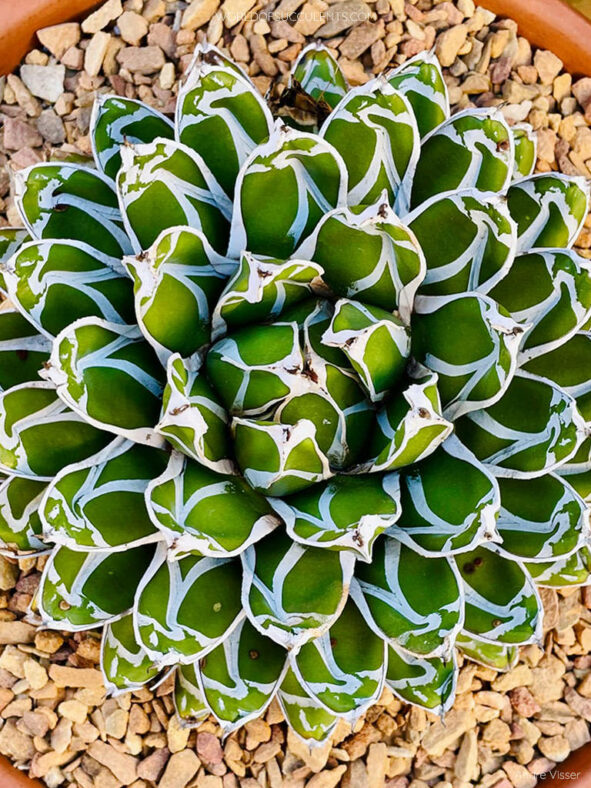Agave victoriae-reginae 'Compacta' is an architectural plant that develops into a nearly spherical rosette, making it an excellent addition to any garden.
Scientific Name
Agave victoriae-reginae 'Compacta'
Accepted Scientific Name
Agave victoriae-reginae T. Moore
Scientific Classification
Family: Asparagaceae
Subfamily: Agavoideae
Genus: Agave
Origin
Agave victoriae-reginae 'Compacta' is a compact form of Agave victoriae-reginae.
Description
Agave victoriae-reginae 'Compacta' is an attractive succulent that forms a compact rosette of rigid, deep green leaves adorned with distinctive white markings, mainly along keels and spineless margins. The rosette grows very slowly, usually does not produce offsets, and can reach a height of 12 inches (30 cm) and a diameter of 18 inches (45 cm). The tapering leaves of the rosette end in a small terminal spine.
When mature (over ten years), Agave victoriae-reginae 'Compacta' produces an erect, unbranched spike that can grow up to 15 feet (4.5 m) tall and bears densely packed flowers. The flowers are typically creamy-white to pale yellow, although they may also appear in shades of red and purple. After flowering, the rosette dies.

How to Grow and Care for Agave victoriae-reginae 'Compacta'
Light: Agave victoriae-reginae 'Compacta' requires full sun to partial shade for optimal growth. If you are growing it indoors, choose a sunny window with as much sunlight as possible. From spring to fall, it enjoys being outside.
Soil: This plant can tolerate most soil as long as it has good drainage, but thrives in sandy or rocky soil.
Temperature: This plant prefers warm temperatures during the growing season and cooler temperatures while resting in winter. It grows best in USDA Plant Hardiness Zones 9a to 11b, with average minimum winter temperatures ranging from 20°F to 50°F (-6.7°C to 10°C).
Watering: To keep your Agave victoriae-reginae 'Compacta' healthy, water it thoroughly when the soil becomes dry from spring to fall. In winter, water it sparingly, about once a month. If you have the plant in a container, it will require more frequent watering than plants in the ground.
Fertilizing: In the spring, during the first two years, give the plant a small amount of fertilizer. After that, the established plant will take care of itself.
Repotting: If you notice your Agave victoriae-reginae 'Compacta' becoming pot-bound, repot it with fresh soil in a new pot slightly larger than the old one. Give the plant a week or so to readjust before you water it again.
Propagation: Since it has a solitary growth habit, this plant can only be propagated by seeds.
Learn more at How to Grow and Care for Agave.
Toxicity of Agave victoriae-reginae 'Compacta'
Agave victoriae-reginae 'Compacta' is not toxic to humans but may be mildly poisonous to children and pets.
Hybrids of Agave victoriae-reginae 'Compacta'
Links
- Back to genus Agave
- Succupedia: Browse succulents by Scientific Name, Common Name, Genus, Family, USDA Hardiness Zone, Origin, or cacti by Genus
Photo Gallery
Click on a photo to see a larger version.


